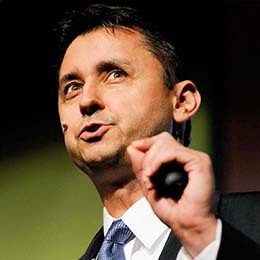Organizational Performance: Aligning People, Strategy, and Results

In high-performing organizations, success is no accident. It’s the product of disciplined alignment among people, strategy, and the outcomes they’re working to achieve. At the heart of this alignment is organizational performance: the measure of how well a company translates organizational goals into results while sustaining momentum, culture, and capability.
Enhancing your organization’s performance requires more than just tracking numbers. It demands intentional leadership, clear direction, and a commitment to continuous improvement. Let’s explore what organizational performance really means, how to measure it effectively, and the proven strategies that can elevate it to new levels.
Why Focus on Organizational Goals and Performance Now?

The cause of almost all relationship difficulties is rooted in conflicting or ambiguous expectations around roles and goals.
Amid constant change and intensifying competition, the margin between thriving and surviving often comes down to how well an organization performs—not just financially but holistically.
In fact, McKinsey data shows that organizational health—or how effectively leaders run operations, make strategic decisions, and engage their high-performing teams—is the top predictor of value creation, as well as a crucial factor in maintaining a competitive edge. The ability to adapt quickly, engage talent, and consistently deliver value has never been more essential. As workforce expectations evolve and customer demands grow more complex, organizations must be intentional about how they align people, strategy, and results.
Understanding Organizational Performance: Definition and Importance
Organizational performance is the ability of a business to achieve its goals efficiently and effectively. It encompasses both the tangible outcomes—like revenue and market share—and the intangible drivers of those outcomes, such as team collaboration, trust, and engagement.
Some of the traditional key indicators of high-performing organizations include:
- Profitability: Are financial goals being met or exceeded?
- Customer Satisfaction: Do customers receive consistent, quality experiences?
- Employee Engagement: Are team members motivated, committed, and contributing at high levels?
- Innovation: Is the organization continually improving, adapting, and staying ahead of change?
Organizations that regularly track and improve performance create competitive advantages, build resilience, and position themselves for long-term sustainability.
The 4 Key Components of Organizational Performance

Nothing is more motivating than belonging to a team of people who know the goal and align themselves to get there.
Taking inspiration from the indicators and questions above, we’ve defined four essential components of effective organizational performance:
- Financial Results: The bottom line reflects the effectiveness of strategic decisions and operational execution.
- Employee Performance: People are an organization’s most valuable asset. Their contributions directly influence outcomes.
- Productivity: Efficient use of resources—including time, talent, and tools—enables teams to do more of the most important things with less.
- Innovation: Continuous improvement keeps organizations agile and forward-thinking.
These components are most effective when strategy, leadership, and daily operations are fully aligned. When everyone is focused on the right organizational goals and empowered to act, performance thrives.
Measuring Organizational Performance
It’s all well and good to recognize the key components of organizational performance. But to maintain a growth mindset that leads to sustained success over time, organizations need to measure the impact of these components and assess possible areas for improvement.
Financial Metrics
Financial metrics remain foundational to understanding organizational performance. While each organization may prioritize a variety of metrics, some of the most common measures include:
- Return on Investment (ROI): Determines the profitability of investments.
- Revenue Growth: Tracks the organization’s ability to expand and increase market share.
- Profit Margins: Reflect operational efficiency and cost management.
Yet measuring financial outcomes alone isn’t enough. To create lasting results, organizations must link these metrics to individual and team behaviors, as seen in the framework of The 4 Disciplines of Execution® (4DX®). By focusing on a Wildly Important Goal®, acting on lead measures, keeping a compelling scoreboard, and creating a cadence of accountability, this execution framework connects everyday actions to big-picture results and ensures those results can be achieved even in the middle of the daily whirlwind of operations.
Cultural and Collaborative Metrics
Beyond the financial numbers, organizations must also track the cultural and collaborative elements that drive engagement, collaboration, and overall performance. These include:
- Employee Satisfaction: How connected, supported, and valued employees feel.
- Teamwork Effectiveness: The degree to which teams communicate and collaborate efficiently.
- Cultural Alignment: How well individual behaviors and values align with the organization’s purpose and direction.
These elements can be measured through tools such as employee engagement surveys, pulse checks, and 360-degree feedback. Organizations that use digital L&D platforms like FranklinCovey’s Impact Platform or All Access Pass® can also use course participation and completion rates to measure engagement, effectiveness, and cultural alignment.
Employee Growth and Retention
Sustainable performance is only possible when employees are growing. Organizations must consistently track:
- Retention Rates: Are high-performing employees sticking around, or are they leaving for other opportunities?
- Career Advancement: Are people progressing in their roles and responsibilities? Does the organization provide opportunities for growth?
- Engagement Levels: Are individuals energized and invested in their work?
Retention strategies—such as leadership development, mentoring, and growth opportunities—play a crucial role in overall organizational performance. Just as important is creating an environment built on trust and mutual respect. Trust-building practices empower leaders to deepen relationships, build credibility, and create cultures where people thrive.
Download our free guide, How to Build Trust and Unleash the Potential of Your Direct Reports, to help leaders at all levels inspire and engage their teams.
The Most Trusted Leadership Company
Learn how your organization can use our people, content, and technology to create collective action and meaningful change.

Strategies to Improve Organizational Performance
It’s not enough to measure and reflect on progress. Organizations also need to establish and execute strategies that will lead to increased engagement, collaboration, and performance across all teams.
Leadership Development

Leadership is the highest of the arts, simply because it enables all the other arts and professions to work.
Strong leadership is the backbone of sustained performance. Your organization’s leaders need to demonstrate character and competence while balancing courage and compassion—no easy feat. But when leaders are clear, competent, and trusted, teams become more effective. While not an exhaustive list, leadership development should focus on building the following skills to drive increased organizational performance:
- Decision-making under pressure
- Creating clarity around goals and expectations
- Prioritizing the most impactful and important activities
- Coaching and giving feedback
- Managing resilience and change
- Empowering others to lead by extending trust
New to your leadership role? Download our free guide, Crucial Insights for First-Level Leaders, to develop the right mindset to help your teams thrive.
Innovation and Change Management

A plan gives both leaders and teams a path forward in times of change.
To perform at a high level, organizations must innovate continuously and manage change with intention. Innovation isn’t limited to breakthrough products—it also includes improving how work gets done, how decisions are made, and how the organization adapts to new realities.
Yet many change initiatives fall short not because the strategy is flawed but because employees don’t understand it—or, more importantly, don’t believe in it. When people aren’t connected to the purpose or rationale behind the change, resistance often becomes the default response. True transformation requires more than tactical plans; it requires emotional commitment.
Leaders play a pivotal role in building that commitment. They must communicate a clear and compelling case for change, create space for dialogue, and ensure that every individual understands how their role contributes to the broader vision. When change is co-owned across the organization, it becomes not only more sustainable, but more impactful.
This is the essence of organizational transformation. Transformation initiatives must be carefully designed to:
- Clarify the why behind the change.
- Engage stakeholders at every level.
- Provide the necessary resources, training, and support.
Successful change requires both strategic planning and compassion for the uncertainty others may be feeling. Leaders must guide transitions with connection and clarity—balancing long-term direction with the needs and concerns of their people. When done well, effective transformation creates alignment, strengthens trust, and accelerates progress across the organization.
Watch our free webcast: How to Build Communication and Collaboration in Times of Change.
Individual Effectiveness

Personal and interpersonal effectiveness unlocks your technical and functional capabilities to create, collaborate, and achieve results with others.
People want to contribute, grow, and be recognized for their efforts. And when you tap into and unleash employee potential, organizational performance follows. Leaders must cultivate environments that encourage curiosity, collaboration, and ownership—principles that are deeply embedded in The 7 Habits of Highly Effective People®. By fostering these habits of self-effectiveness and interpersonal skills, organizations can build a culture where individuals take responsibility for their growth and work together to achieve common organizational goals.
Register now for our complimentary webcast, The 7 Habits Effect, to learn how the reimagined 7 Habits can make an impact within your organization.
Workplace Culture

Developing—or perhaps redeveloping—a healthy organizational culture in today’s environment requires an investment of patience, trust, and support. But the reward is a workforce that shows up authentically, does their very best work, and is less likely to exit when things get tough.
Individual efforts and leadership development alone aren’t enough to sustain outstanding organizational performance. Undoubtedly, a thriving workplace culture plays a crucial role in maintaining momentum. In fact, Gallup data shows that strong organizational cultures show significant increases in employee engagement, workforce growth, customer patronage, and net profits compared to businesses with weaker organizational cultures. A culture rooted in clarity, accountability, and purpose drives better results, reduces friction, and improves adaptability during times of change—and since business leaders are struggling with more change, uncertainty, and mistrust than ever, there’s never been a better time to build a high-trust, high-performance culture.
Download our guide, The 4 Pillars of a Thriving Workplace Culture, to discover the critical components of a healthy, high-performing organizational culture.
Sustaining Organizational Performance
Sustained performance requires more than a strong quarter or one successful initiative. It takes a growth mindset embedded in the culture that constantly seeks ways to improve, learn, and adapt. Organizations that embrace continuous improvement empower their people to identify opportunities, share ideas, and drive innovation from within—all while staying resilient, adaptable, and abundance-oriented. This ongoing commitment ensures the organization doesn’t just reach its current goals but evolves to meet new ones.
Long-term organizational performance is built through consistent focus on what matters most:
- Balancing financial and cultural metrics for a full picture of health.
- Aligning cross-functional teams around a Wildly Important Goal that directs energy and attention.
- Investing in leadership, innovation, and employee development to maintain a pipeline of future capability.
With the right focus, tools, and leadership behaviors, high organizational performance becomes a natural byproduct of how an organization operates day-to-day. By ensuring that organizational goals are achieved and high performance becomes the standard, rather than the exception to the rule, you can future-proof your organization and give your teams the tools they need to succeed over time.
Looking to close performance gaps and drive breakthrough behaviors for strategic excellence? Register for our complimentary webcast, Drive Performance: Align People and Strategies for Breakthrough Results.








